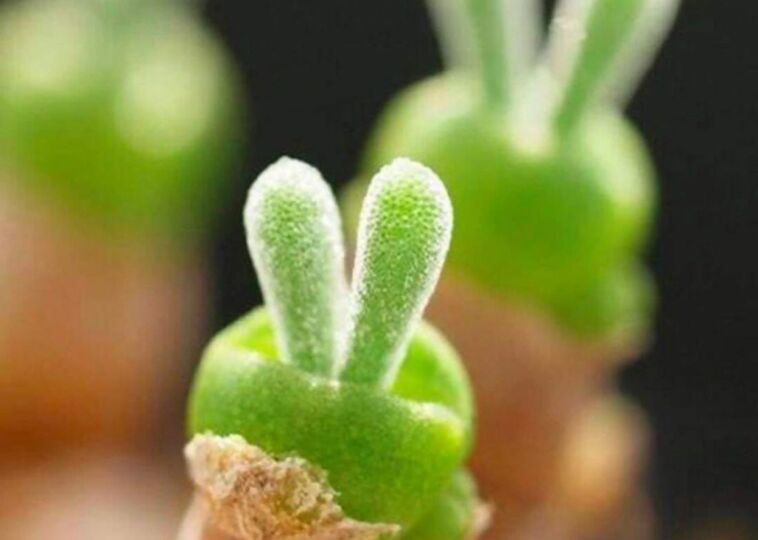Discover the World’s 10 Weirdest Plants that will Blow Your Mind

Contents [hide]
Earth is a botanical wonderland, boasting over 298,000 plant species, each playing a vital role in maintaining the balance of our ecosystems. Plants are undeniably diverse, from the vibrant hues of blooming flowers to the bounty of nutrient-rich fruits and medicinal wonders.
Whether they look like an alien artist has designed them or seem to have stepped out of a science fiction novel, these strange plants challenge our understanding of the botanical world.
White Baneberry

Meet the White Baneberry, a true botanical enigma lurking in North American forests. Also whimsically dubbed the doll’s eye, White Baneberry boasts an array of small, ball-shaped fruits that resemble miniature eyeballs clustered together in elongated formations. Standing up to 60 cm tall, White Baneberry doesn’t just catch the eye with its peculiar fruits.
The White Baneberry’s fruits are highly toxic to humans, a potent reminder of nature’s duality and beauty coupled with danger. The White Baneberry’s flowers are tiny, measuring just 6 mm across, and they sit on slender green stems that often sport a purplish hue at the nodes.
Each flower eventually gives way to the plant’s signature fruits, which are enchanting and scary. Despite its toxicity, White Baneberry plays a role in its ecosystem, providing food and habitat for certain wildlife that have evolved to handle its toxic compounds.
Baseball Plant

The Baseball Plant, known as Euphorbia obesa, is a botanical marvel. With its spherical form and striking appearance, this extraordinary plant is a testament to nature’s creativity and resilience. Let’s delve into what makes this plant unique and why it deserves a closer look.
Imagine a plant so uniquely shaped that it resembles a baseball. This is precisely the charm of the Euphorbia obesa. Unlike the traditional leafy green shrubs or trees, this plant defies expectations with its round, ribbed body. It’s a succulent that thrives in its natural habitat with minimal fuss.
With no spines or leaves to worry about, it’s a plant about simplicity and elegance. The Baseball Plant is ideally suited to its environment, thriving in the slightly sandy soils of its native Northern Cape.
Hydnellum peckii

Meet Hydnellum peckii, commonly known as the ‘Bleeding Tooth Fungus. ‘ This peculiar mushroom isn’t just about its eerie appearance; it’s a marvel of nature with an intriguing story. Hydnellum peckii is aptly named for its unsettling appearance. The scarlet pigment in this fluid gives it a blood-like hue, making it a striking, if somewhat troubling, find in the wild.
Hydnellum peckii thrives in the relaxed, shaded environments of mountainous and forested regions across North America, Europe, Iran, and South Korea. This collaboration is a win-win: the fungus provides essential enzymes that break down amino acids and minerals from the soil, making them accessible to the trees.
Welwitschia Mirabilis

Welwitschia mirabilis is not just another desert plant; it’s a living testament to resilience. Imagine a plant that has been around for millennia, enduring scorching heat, bone-dry conditions, and relentless winds. This plant has perfected the art of survival in extreme environments, making it a true desert pioneer. What truly sets Welwitschia apart is its unusual growth habit.
Unlike most plants, which grow new leaves periodically, Welwitschia has only two that keep growing throughout life. These leaves are not your average foliage; they’re long, strap-like structures that can reach several meters long. Over time, these leaves become tattered and frayed, adding to the plant’s unique appearance.
This continuous growth is not just a quirk; it’s a strategic adaptation to its harsh environment. The plant has separate male and female specimens, each with distinct features. Male plants produce a modified pistil-like structure that is sterile, while female plants develop cones with exposed stigmas that secrete a droplet of nectar.
Pollination in Welwitschia is a spectacle of nature’s efficiency. The plant relies heavily on wind to disperse its pollen, which is released in large quantities. Fungal infections and small desert animals that prey on the seeds can impact survival.
Lithops

Lithops, native to the arid regions of South Africa, are the ultimate masters of camouflage. Their unique appearance, which mimics the look of pebbles or stones, is not just for show. This clever disguise helps them blend seamlessly into harsh desert surroundings, making them nearly invisible to herbivores and minimizing water loss.
Their compact growth and distinctive shape, formed by two thick, pebble-like leaves merging at the edges, make them perfect for indoor environments where space is limited. Lithops aren’t just about looking like stones; they also put on a colorful display. Their leaves come in shades, from soft whites and grays to vibrant pinks and purples.
These tiny plants grow new leaves during the rainy season and prepare for the next cycle. Their remarkable ability to thrive with minimal water and adapt to extreme conditions speaks volumes about their evolutionary success. One of the most intriguing aspects of Lithops is their longevity.
Mimosa Pudica

Commonly known as the sensitive or shy plant, this green wonder is native to South America but has made its way around the globe, often finding a cozy spot in shady corners. Imagine a plant that reacts to touch as if it’s in perpetual surprise.
This intriguing reaction is due to a primitive form of a nervous system that regulates water flow within the plant. It’s like the plant has its own set of tiny hydraulics, making it capable of rapid, visible responses to external stimuli.
But don’t be fooled by its bashful demeanor. Mimosa pudica packs quite a punch regarding medicinal benefits. For centuries, this plant has been utilized for its healing properties. Mimosa pudica may shy away from touch, but its contributions to traditional medicine are anything but timid.
Corpse Flower

Meet the titan arum, better known as the corpse flower, a botanical marvel with a reputation as bold as its name suggests. Native to the rainforests of Sumatra, this extraordinary plant is more than just a curiosity. It’s a rare, endangered species that commands both awe and caution. Now, what’s the deal with the name corpse flower?
It’s not just for shock value. The corpse flower has earned its name due to its incredibly foul odor during bloom; think of the smell of rotting flesh. The spadix is at the heart of the corpse flower, a spiky green column that holds the plant’s flowers.
The spadix is surrounded by the spathe, a large, fleshy, and vividly colored structure that resembles red meat. Interestingly, the corpse flower has a unique reproductive strategy. The male and female flowers on the spadix mature at different times to prevent self-pollination.
This ensures genetic diversity and the continued health of the species, although it also means that the plant’s blooming cycle is a rare and highly anticipated event. One of the most captivating aspects of the corpse flower is its blooming cycle. These botanical giants flower only once every 40 years, making each bloom a once-in-a-lifetime event for many.
Rafflesia Arnoldii

But one flower shatters these expectations with its sheer size and distinct aroma: Rafflesia arnoldii, the world’s largest individual flower. Rafflesia arnoldii is nothing short of a botanical marvel. Native to the dense forests of Sumatra, this giant flower can reach an astonishing three feet in diameter, making it the largest single bloom on the planet.
What makes Rafflesia arnoldii even more intriguing is its reproductive system. Despite its immense size, it’s unisexual, meaning each flower has both male and female reproductive organs. This unusual trait is one of the many ways this plant stands out.
If you think the sheer size of Rafflesia arnoldii is impressive, wait until you experience its scent. It’s nature’s way of making sure that even the most unusual flower gets its chance to reproduce. Instead, it relies entirely on its host plant for survival.
Venus Flytrap

Regarding nature’s marvels, few plants are as captivating as the Venus Flytrap. The Venus Flytrap isn’t just any plant; it’s a sophisticated insect trap with an elegant and deadly design. Native to the wet, acidic soils of Eastern Carolina, this plant has evolved two specialized lobes at the end of each leaf.
This quick action is not just for show. It’s a survival strategy that ensures no insect escapes its clutches. The Venus Flytrap’s lobes don’t just close haphazardly. Once the trap is set, the plant begins the digestion process. The Venus Flytrap breaks down its prey within ten days, absorbing the nutrients it needs to thrive.
This process is not just about survival; it’s about turning limited resources into energy in a nutrient-poor environment. What’s truly remarkable about the Venus Flytrap is its ability to flourish in environments many other plants would find inhospitable.
Pitcher Plant

Found predominantly in the lush landscapes of Southeast Asia, this carnivorous plant isn’t just another pretty face in the garden. With its vivid colors and deceptive charm, the Pitcher Plant is a master of disguise, drawing in its unsuspecting victims with a blend of allure and cunning. Imagine a plant that wears its dinner on its sleeve.
The Pitcher Plant is nature’s bait-and-switch artist, with its striking deep red hues and enticing scents. What sets the Pitcher Plant apart is its ingenious structure. The inside of the pitcher is lined with a slick, slippery surface and filled with a digestive fluid that’s more than just a pool of goo. But the Pitcher Plant doesn’t stop there.
The top of the pitcher is covered by a lid or ‘hood, ‘ which shields the fluid from rainwater, ensuring that the digestive mix remains concentrated and effective. Once an insect or small animal ventures into the pitcher, it quickly becomes sticky.


